

Next Friday, I head to The Homeland (i.e. Massachusetts) to attend the NEC-RWA’s Annual Conference. During that time, I will get to a) ride a bus with my friend Kwana, who is insisting on teaching me knitting (our other friend, Elizabeth, cannot stand buses, so she’s training it there) b) not see Anne Stuart, who had to cancel as keynote speaker c) hang out with my friend Myretta Robens (known on my own blog as the Delightful Phone Friend), and d) look like even more of a ninny; see below.
See, during the Conference there is a party, a party where–wait, here’s the description:
‘Bring Your Fiction to Life’ Costume Party!
Fun Is Mandatory…Costumes Are Optional
Choose any character from fiction past or present…whether from a favorite book, movie, or even your own manuscript.
Someone was inspired to create this fictional character. Come and show us why!
Oh, my lord (and my panic has nothing to do with the quality of the idea–the idea is fine; unfortunately, so is my panic). So who do I pick? One of my favorite characters is MTV’s Daria (and I think I look a smidge like her, too), but–dressing up like a cartoon character for a party? A CANCELLED cartoon character? Might as well just wear the big ‘L’ on my forehead.
Hm. Who else could I be? Last Halloween, I went to a costume party dressed as Miss Havisham, which meant I donned my aunt’s old wedding dress and put some tattered cheesecloth around my shoulders. Equally lame as the Daria thing. Plus Miss Havisham isn’t really a favorite character.
Jane Eyre? Sorta plain garb, mud-soaked boots from tromping around searching her soul? I could do that, but it’s hardly going to feel like I’m at a party. Unless it was an orphan party or something.
I know you’re all wondering why I don’t mention Elizabeth Bennet, but geez, I’m not 18, don’t have Empire waist gowns lying around in my Brooklyn apartment, and I’m even less than tolerable. Back to the literary drawing board.
Godot? Harriet The Spy (I love tomato sandwiches!)? Lew Archer? Ack!
Who’s your favorite literary character? Who would you like to dress up as?
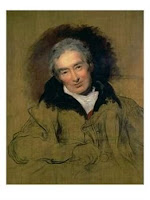 This is a follow-up to Cara’s post the other day about the movie Amazing Grace. Why, you may ask, did the movie industry glom onto what is still (and unjustly) a rather obscure bit of history? Because this year is the two-hundredth anniversary of the Slave Trade Act that came into law on March 25, 1807 (and we’re nearly there and it’s my turn to blog). This, by the way is Sir Thomas Lawrence’s portrait of William Wilberforce.
This is a follow-up to Cara’s post the other day about the movie Amazing Grace. Why, you may ask, did the movie industry glom onto what is still (and unjustly) a rather obscure bit of history? Because this year is the two-hundredth anniversary of the Slave Trade Act that came into law on March 25, 1807 (and we’re nearly there and it’s my turn to blog). This, by the way is Sir Thomas Lawrence’s portrait of William Wilberforce.
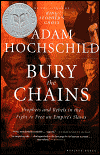 I first became interested in this topic by reading Adam Hochschild’s wonderful book Bury The Chains, which made me aware of what a burning issue abolition was for late Georgian society (and inspired me to write my October 2007 release, Forbidden Shores). Hochschild points out that it was possibly the first time that people cared passionately enough about a cause–something that would benefit strangers thousands of miles away who they would never meet–to make sacrifices themselves. Ropemakers in Bristol, one of the cities that thrived on the trade, petitioned to end the slave trade, knowing full well that their own livelihood would be threatened.
I first became interested in this topic by reading Adam Hochschild’s wonderful book Bury The Chains, which made me aware of what a burning issue abolition was for late Georgian society (and inspired me to write my October 2007 release, Forbidden Shores). Hochschild points out that it was possibly the first time that people cared passionately enough about a cause–something that would benefit strangers thousands of miles away who they would never meet–to make sacrifices themselves. Ropemakers in Bristol, one of the cities that thrived on the trade, petitioned to end the slave trade, knowing full well that their own livelihood would be threatened.
 It was also a movement that cut through divisions of class and gender; ordinary housewives boycotted sugar. Wedgwood produced this plaque (it reads Am I not a man and a brother?) that appeared on many artefacts.
It was also a movement that cut through divisions of class and gender; ordinary housewives boycotted sugar. Wedgwood produced this plaque (it reads Am I not a man and a brother?) that appeared on many artefacts.
The abolitionists introduced the tactics of the modern political campaign–slogans, investigative journalism, slogans, and powerful visuals like this depiction of a slave ship.
 Of course, the major question is why did this happen? What made ordinary–and not so ordinary people–care so passionately about this cause? Hochschild’s answer is rather interesting, and one that made me think entirely differently about the Gerogian and Regency periods. Georgian England was seen, and saw itself, surprisingly, as a fairminded and democratic sort of place–the monarchy was mostly benign, and the concept of Magna Carta operated as a sort of unofficial constitution. Few could vote, but ordinary men had the power of the petition. The country had a great infrastructure, because of the Royal Mail, a high level of literacy, and dozens of newspapers. The dealbreaker of the 1807 act was a new petition bearing several thousand signatures, collected in the north of England and delivered to Westminster in a matter of hours. Hochschild suggests, too, that people in England felt an affinity with the Africans whose communities were devastated by slaver raids, because something similar happened in their own ports–the press gang, which enforced men to serve in the Navy.
Of course, the major question is why did this happen? What made ordinary–and not so ordinary people–care so passionately about this cause? Hochschild’s answer is rather interesting, and one that made me think entirely differently about the Gerogian and Regency periods. Georgian England was seen, and saw itself, surprisingly, as a fairminded and democratic sort of place–the monarchy was mostly benign, and the concept of Magna Carta operated as a sort of unofficial constitution. Few could vote, but ordinary men had the power of the petition. The country had a great infrastructure, because of the Royal Mail, a high level of literacy, and dozens of newspapers. The dealbreaker of the 1807 act was a new petition bearing several thousand signatures, collected in the north of England and delivered to Westminster in a matter of hours. Hochschild suggests, too, that people in England felt an affinity with the Africans whose communities were devastated by slaver raids, because something similar happened in their own ports–the press gang, which enforced men to serve in the Navy.
As I said, Hochschild’s book made me rethink the Regency, and I’m wondering if you have come across something, a book or movie, that revealed an unusual facet or layer to your understanding of the period.
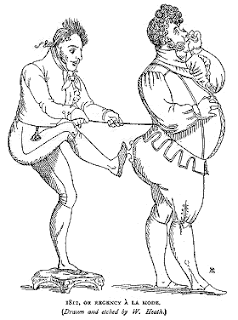 Actually, I’m not talking about the mistake of taking on a career tightening Prinny’s corset, though I think this poor fellow deserves combat pay for his efforts.
Actually, I’m not talking about the mistake of taking on a career tightening Prinny’s corset, though I think this poor fellow deserves combat pay for his efforts.
I’m talking about the more egregious mistakes regarding servants I’ve seen once in a while in Regency-set romances.
This past weekend I listened to a children’s song by Tom Chapin in which a royal footman sang in an imitation Cockney accent. But what I can deal with in a children’s song I find harder to take in a historical romance. I have read stories in which a butler or valet spoke Cockney and I have to admit that grates. It’s as if the author felt it was necessary to clarify the differences in social status.
 Yet some authors make the opposite error. In one book I read a scene where the hero, on returning home, warmly and publicly greets a man on the stairs using his first name. For a moment I thought there was a brother or good friend the author hadn’t mentioned before. It turned out to be the butler. It didn’t ruin the book for me but it did confuse me for a scene.
Yet some authors make the opposite error. In one book I read a scene where the hero, on returning home, warmly and publicly greets a man on the stairs using his first name. For a moment I thought there was a brother or good friend the author hadn’t mentioned before. It turned out to be the butler. It didn’t ruin the book for me but it did confuse me for a scene.
Yet I think this is something that is easily researched or even just absorbed through enough reading in the period. It’s not hard to learn the names and roles of various servants. Maybe the relationship between them and their masters is a bit more of a subtle thing. The way I understand it, servants often took their tone from the households they served. In a respectable household, the servants who dealt most closely with the family members (and as you can see some of them had to deal quite closely!) and also those who dealt with guests were expected to be respectable and well-spoken themselves. Of course, in a more ramshackle household the servants could run amok, too. It’s all part of the characterization.
Georgette Heyer wrote some of the strongest servant characters in her novels, like the domineering old Nurse in VENETIA, or Keighley, the groom in SYLVESTER. I don’t think I’ve read a romance in which a servant had a romantic role but I’ve read a few in which the heroes or heroines pretended to be a servant. Probably my favorite of those is Loretta Chase’s THE SANDALWOOD PRINCESS.
So what are some of your favorite servant (or pretending to be) characters? Do you like it when an author plays with class differences in a romance? Are there errors in depiction of servants that grate on you?
Elena
www.elenagreene.com
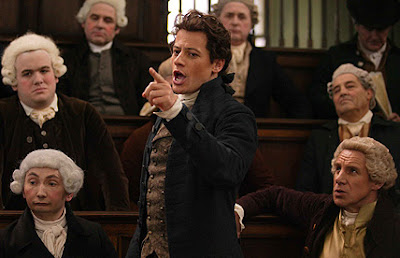
I recently saw Amazing Grace, a passionate (and romantic) film which does a nice job of turning the story of William Wilberforce’s late 18th century fight against the British slave trade into an entertaining movie with a beginning, middle, and end.
The film is by no means perfect. To turn Wilberforce’s struggle into a nice plot arc, there’s a lot of jumping forward and backward in time, which confuses some viewers.
There are also some definite alterations to historical fact.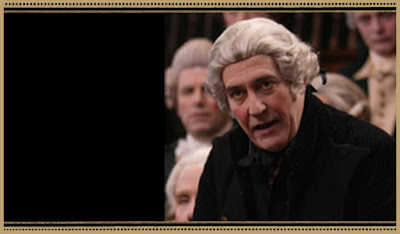
These, of course, are likely to be met with the same reception they always get — some people will care more, some less, and some not at all. Some will say why bother at all it you’re not going to do it right? Some will mind the costume errors but not the other changes, and some will mind everything but the costume errors.
Overall, I really liked the movie.

To start with: the cast! Oh, what a cast. We have Ioan Gruffudd as Wilberforce: charismatic, dogged, brooding. (First picture.)
We have Ciaran Hinds as Banastre Tarleton: angry, snide, sharply intelligent. (Second picture).
And because we can never have too many handsome, dark-haired actors, we also get Rufus Sewell as rebellious anti-slavery crusader Thomas Clarkson. (Third picture.)
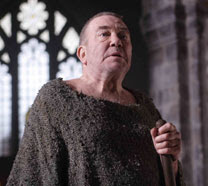 And — yes! Albert Finney (fourth picture), as John Newton, who wrote the famous hymn. (Yes, who’d have pictured Tom Jones grown up so anguished?)
And — yes! Albert Finney (fourth picture), as John Newton, who wrote the famous hymn. (Yes, who’d have pictured Tom Jones grown up so anguished?)
 Toby Jones plays the Duke of Clarence, the naval son of King George III (and later King William IV) as a clever and witty bon vivant.
Toby Jones plays the Duke of Clarence, the naval son of King George III (and later King William IV) as a clever and witty bon vivant.
And Michael Gambon plays Fox (fifth picture).
And for true Regency-fan coincidence (yes, you heard it here first! A Risky exclusive bon mot!), Wilberforce’s cousin Thornton is played by Nicholas Farrell…and Thornton’s wife is played by Sylvestra Le Touzel.
There, isn’t that amazing???? 🙂 (Just curious — is there anyone here as movie-obsessed as I, who sees something odd there?)
Oh, okay, I’ll out with it. In the (really quite boring) 1983 BBC version of Mansfield Park, Nicholas Farrell played Edmund Bertram, and Sylvestra Le Touzel played Fanny Price. 
So these two actors played Fanny and Edmund falling in love in 1983, and they play a married couple here. Wonder if they had fun reminiscing?
As I said, I really loved the film. I loved its color, and commitment, and intensity. I loved that we saw sides of this period that we too seldom see. (The scenes in Parliament were all splendid.) And I loved the actors.
And though I don’t have a picture of her here, I liked Romola Garai’s performance as Wilberforce’s love interest quite a lot. Her character is intelligent, forthright, articulate, and Garai carries off both the dramatic bits and the lighter moments equally well.
As for the historical changes I mentioned above…I have mixed feelings here. They mucked about a bit with costumes and hair (as is usual), and though I noticed some of it, it didn’t much bother me.
What did bother me rather more was that Pitt and Wilberforce were sitting in the House of Commons together with the Duke of Clarence and “Lord” Tarleton. Yeah, just weird. And even weirder — the real Tarleton was never in his life a peer anyway! Years after the end of the movie, he was made a baronet — still not a peer, of course! But throughout the movie (and on the official movie website), he is consistently referred to as “Lord Tarleton.” And I really can’t think of a single good reason why. (I have thought of one bad reason… Aristocrats are by definition selfish and evil, so they supported the slave trade, so Tarleton had to be made a peer…???)
So… Have you seen the movie? Do you intend to?
Which actors or actresses in it would most tempt you to see it? Or would the setting or the subject most convince you to take the plunge?
All comments welcome!
Cara
Cara King, author of My Lady Gamester and movie fanatic